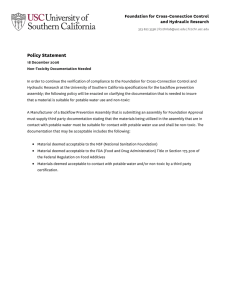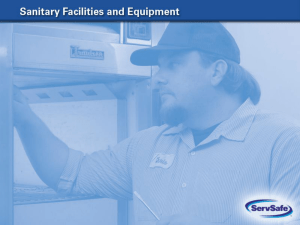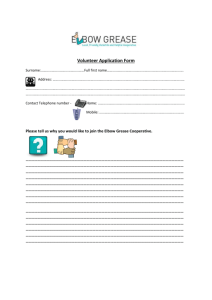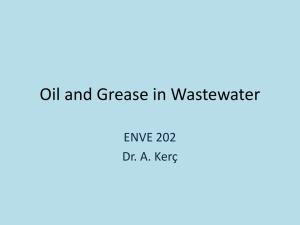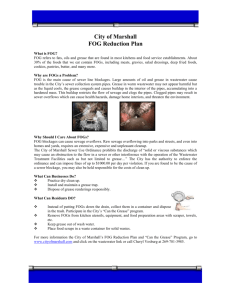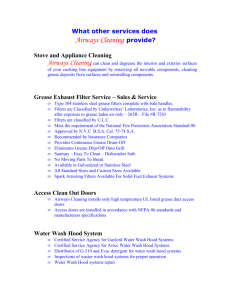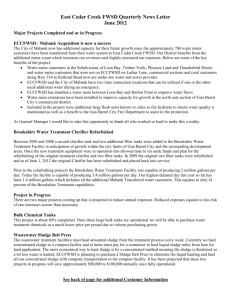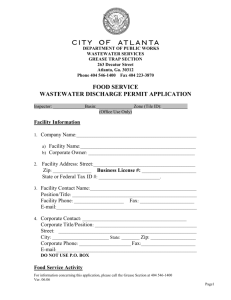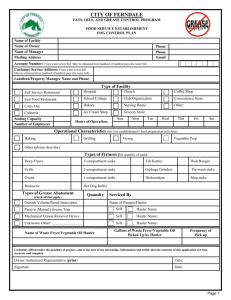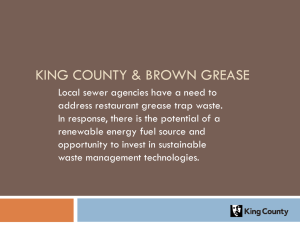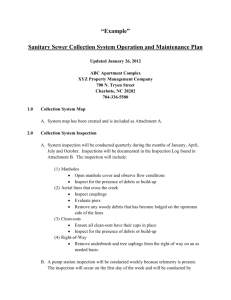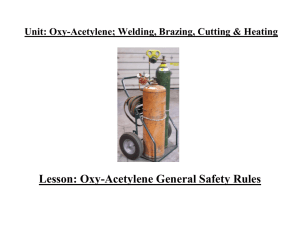Chapter 10 ServSafe
advertisement
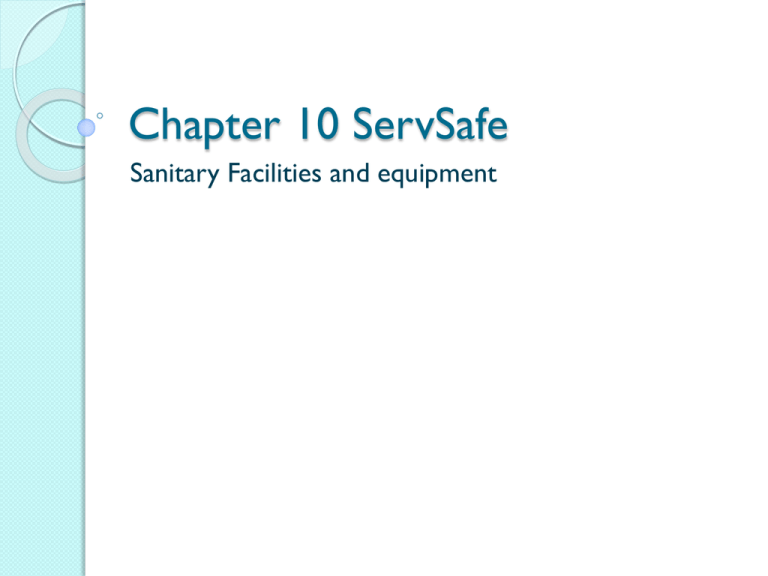
Chapter 10 ServSafe Sanitary Facilities and equipment Designing a Sanitary Operation Facility Design Good workflow- keep food out of danger zone & limit the number of times food is handled. Reduction of cross-contamination- place equipment to prevent splashing or spillage from one piece of equipment onto another. Accessibility for cleaning- hard to reach areas are less likely to be cleaned. Design Review-check with your local regulatory authority before any new construction or remodeling project It ensures that the design meets regulatory requirements It ensures a safe flow of food It may save time and money Interior Requirements for a Sanitary Operation Floors- should be smooth, nonabsorbent, easy to clean, and durable. Food prep Food storage Dishwashing Walk-in coolers Dressing and locker rooms Restrooms Floors should have coving. Walls, ceilings and Doors Smooth Nonabsorbent Durable Easy to clean Equipment Selection Food Contact Surfaces Safe for contact with food Nonabsorbent, smooth, and corrosion resistant Easy to celan and maintain Durable-stands up to heavy use and repeated cleaning Resistant to damage such as pitting, chipping, crazing (spider cracks), scratching, scoring, distortion and decomposition Installing and Maintaining Equipment Floor-mounted equipment-put floormounted equipment on legs at least six inches high. Another option is to seal it to masonry base. Tabletop equipment-put tabletop equipment on legs at least four inches high. Or seal it to the countertop. Gaps-Seal any gaps between equipment and surrounding countertops and walls. Nonfood-contact surfaces Nonabsorbant, smooth, and corrosion resistant Easy to clean and maintain Free of unnecessary ledges, projections, and crevices Choose equipment that has NSF creates standards for foodservice equipment. Certifies equipment. Means an item has been evaluated, tested and certified by NSF as meeting its foodequipment standards. Underwriters Laboratories (UL) provides classification listings for equipment that meets ANSI/NSF standards. UL also certifies items that meet its own standards for environmental and public health (EPH). Utilities and Building Systems Water and plumbing When water is safe to drink it is called potable. Sources: Approved public water mains Private water sources that are tested regularly and maintained. (SAFE to use) Closed, portable water containers Water transport vehicles Cross-connection A physical link between safe water and dirty water, which can come from drains, sewers, or other wastewater sources. Backflow is the reverse flow of contaminants through a cross-connection into a potable water supply. Occurs when pressure in potable water supply drops below the pressure of dirty water. The pressure difference can pull the dirty water into safe water supply Backflow prevention The best way to prevent backflow is to avoid creating a cross-connection. Do NOT attach a hose to a fauces unless a backflow prevention device, such as the vacuum breaker is attached. Only sure way to prevent a backflow is to create an air gap-an air space that separates a water supply outlet from a potentially contaminated source. Grease condensation Buildup of grease in pipes cause plumbing issues Grease traps are often installed (by licensed plumber) to prevent grease buildup from blocking the drain. Must be cleaned regularly following the manufacturer’s recommendations. Overhead leaks Overhead wastewater pipes or fire-safety sprinkler systems can leak and cause contamination Even overhead pipes carrying potable water can condense on the pipes and drip into food Sewer Sewage and wastewater are contaminated with pathogens, dirt, and chemicals IF raw sewage backs up in your operation, CLOSE the affected area RIGHT AWAY!!! Floor drains should be installed Lighting Lighting requirements are usually measured in units called footcandles or lux. All lights should have shatter-resistant lightbulbs or protective covers. These products prevent broken glass from contaminating food or food-contact surfaces Minimum Lighting Intensity Area 50 foot-candles (540 lux) Prep areas 20 foot-candles (215 lux) •Handwashing or dishwashing areas •Buffets and salad bars •Displays for produce or packaged food •Utensil-storage areas •Wait stations •Restrooms •Inside some equipment (e.g; reach-in coolers) 10 foot-candles(108 lux) Inside walk-in coolers and freezer units Dry –storage areas Dining rooms (for cleaning purposes) Ventilation Improves the air inside an operation. It removes odors, gases, grease, dirt and mold. •If ventilation is poor, grease and condensation will build up on walls on ceilings. •Ventilation must be designed so that grease and condensation from hoods, fans and ductwork do not drip onto food or equipment. •Hood filters or grease extractors must be tight fitting but easy to take off. Make sure they are cleaned on a regular basis Garbage Garbage should be removed from prep areas as quickly as possible to prevent odors, pests and possible contamination Clean the inside & outside of garbage containers frequently and AWAY from prep or food-storage areas Indoor containers-leak proof, waterproof, and pest proof Liners for containers-Line with plastic or wet-strength paper bags Outdoor containers-place on a smooth, nonabsorbent surface with tight-fitting lids covered at all times. Maintaining the Facility Clean the operation on a regular basis Make sure all building systems work & are checked regularly Make sure the building is sound. (no leaks, holes, or cracks in floors, foundation, ceilings, or windows) Control pests Maintain the outside of the building and property, including patios and parking lots.
